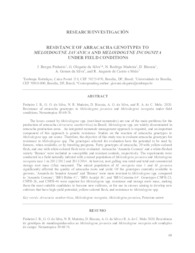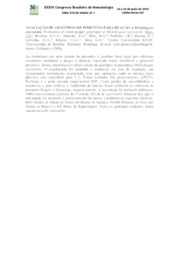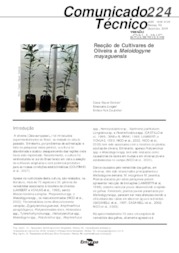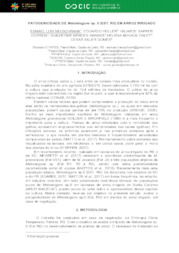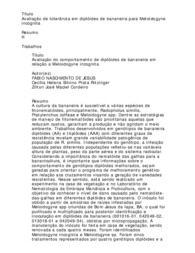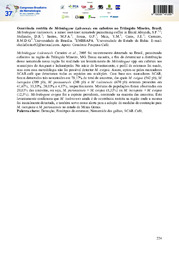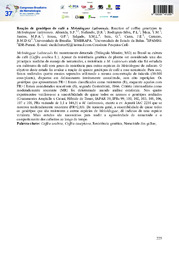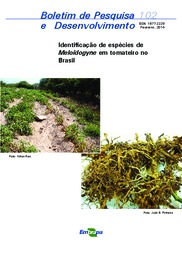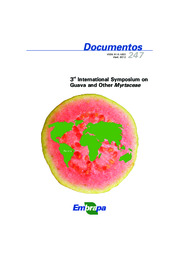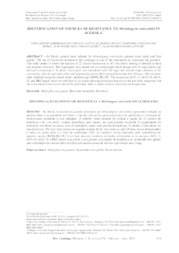Search Publications
Filter by:
| Author(s): PINHEIRO, J. B.; SILVA, G. O. da; MADEIRA, N. R.; BISCAIA, D.; MELO, R. A. de C. e The objective of this study was to evaluate arracacha genotypes for resistance to Meloidogyne spp. The genotypes selected for evaluation have the potential to be used by farmers, when available, or by... ... |
| Author(s): JESUS, J. G.; BARBOSA, A. V. S.; MACEDO, A. G.; SILVA, M. G.; PINHEIRO, J. B.; BISCAIA, D.; CARVALHO, S. I. C. de; RIBEIRO, C. S. C.; SILVA, G. O. da Objetivou-se avaliar a reação de genótipos de pimentão a Meloidogyne enterolobii. |
| |
| |
| Author(s): JESUS, F. N. de; RITZINGER, C. H. S. P.; CORDEIRO, Z. J. M. A cultura da bananeira é suscetível a várias espécies de fitonematóides, principalmente, Radopholus similis, Pratylenchus coffeae e Meloidogyne spp. Dentre as estratégias de manejo de fitonematóides s... ... |
| |
| |
| |
| Author(s): CASTRO, J. M. da C. e; SANTOS, C. A. F.; FLORI, J. E. Brazil was the 7th world guava producer in 2008, producing 298,798 ton in 15,641 ha. However, the presence of the root-knot nematode, Meloidogyne enterolobii, has been caused severe loss to guava grow... ... |
| |
Observation
Some of Embrapa's publications are published as ePub files. To read them, use or download one of the following free software options to your computer or mobile device. Android: Google Play Books; IOS: iBooks; Windows and Linux: Calibre.
Access other publications
Access the Agricultural Research Database (BDPA) to consult Embrapa's full library collection and records.
Visit Embrapa Bookstore to purchase books and other publications sold by Embrapa.

